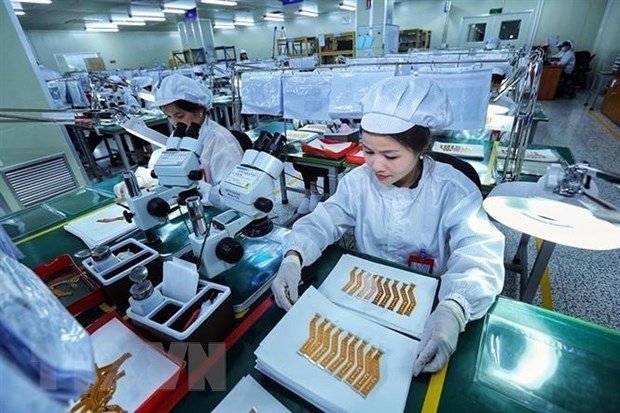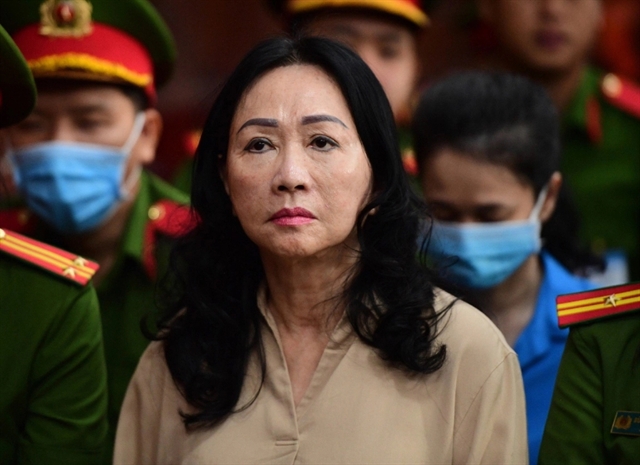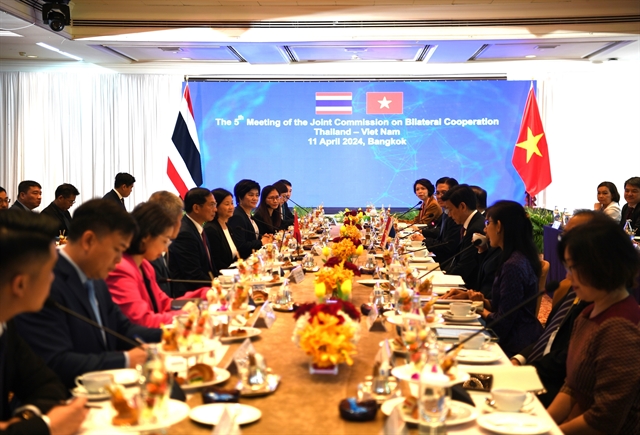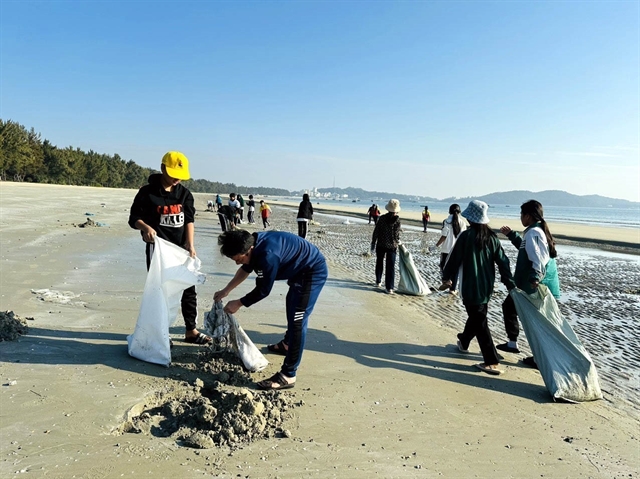 Economy
Economy

" />Việt Nam News reporter speaks to Trần Thanh Hải, deputy director of the Import-Export Department under the Ministry of Industry and Trade and Thân Đức Việt, deputy general director of Garment 10 Corporation Joint Stock Company (Garco 10) about the development of the textile and apparel industry.
The textile and apparel industry was defined as a field with one of the highest growth rates potentials over the next 12 years. However, companies in the sector face challenges due to global trade policy changes and the boom of the Fourth Industrial Revolution. Việt Nam News reporter speaks to Trần Thanh Hải, deputy director of the Import-Export Department under the Ministry of Industry and Trade and Thân Đức Việt, deputy general director of Garment 10 Corporation Joint Stock Company (Garco 10) about the issues.
Trần Thanh Hải
What are the opportunities and challenges for the country’s garment and textile industry in 2018?
 |
| Trần Thanh Hải |
Garment and textile has always been a sector with a great contribution to the economy in general and export activities in particular, although the global economy has seen many potentially uncertain factors. The sector still has good growth with increasing orders and large exports, a good trend for the textile and garment industry.
However there are difficulties long term. Currently, the sector has mainly focused on outsourcing. It has been highly dependent on imports for its material such as yarn, fabric, weaving and dyeing. We are also weak in marketing which could bring high added value for textile and garment products.
The Government is now focusing its support by taking advantage of free trade agreements (FTA). Especially, Comprehensive and Progressive Agreement for Trans-Pacific Partnership (CPTPP) that requires strict rules of origin. On the other hand, the Government has concentrated on building large brand names which could join in global distribution chain. These are the issues that our garment companies are making a priority.
What policy should the government have to promote exports?
With the current capacity, the export scale is close to the limit. We need to have more investments in order to meet the export demand in a long-term and sustainable manner. In addition, in order to expand exports, we should of course have markets with greater preferential or markets where we have FTAs. We still have some agreements that are very significant for textiles such as CPTPP, EU-Việt Nam Free Trade Agreement (EVFTA). All of these agreements are still in place. It is expected that they would be implemented in the future.
How will the Fourth Industrial Revolution affect the garment and textile industry?
For textile and garment industry as well as those which use a big number of labourers, this has a significant impact. When the Industry 4.0 is fully applied, the number of labourers will be redundant. The issue is that textile and garment enterprises need to reorganise to know how to apply technological achievements at production stages.
Labourers need to upgrade their knowledge to operate more sophisticated machines. Every machine should be operated by an employee. In the Industry 4.0 era, however, the operation requires a higher level than the present.
Could Việt Nam’s garment and textile industry continue to maintain its competitiveness as the global trade policies have seen changes?
The competitiveness of Việt Nam’s textile and garment industry is relatively high. Therefore, we still maintain the high export growth. Long-term, we see problems that need to be overcome to maintain high export.
Local companies should improve their management capacity. If businesses do not have management ability to operate plants on a larger scale in a more fierce market and requiring newer technologies, they could fall behind, stop or not be competitive.
Thân Đức Việt
What are your evaluations of the country’s garment and textile sector?
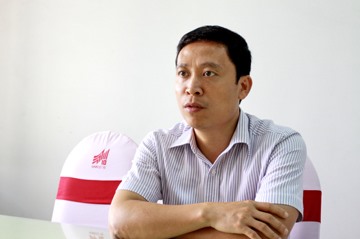 |
| Thân Đức Việt |
Garco 10 is a typical unit. Our company’s exports in the first six months of the year had more positive signals compared to last year.
The number of orders from the beginning of the year has been very stable. In previous years, we received orders three months in advance.
However, we received orders from big importers in the world such as the US, Europe and Japan to August since last December. Market signals are relatively good.
In terms of export value or business output effectiveness, these are not as good as in 2017. The export prices have not been increased though the number of orders has been on the rise.
Secondly, there is a fierce competition in term of labour among businesses. Enterprises which do not have good policies for labourers and lack strong financial resources, transparent and effective management, could struggle.
What should businesses do to ensure good labour force in the current fierce competition?
The competition for labour sources is partly an internal problem. If a company is not strong enough, workers could leave.
Another key factor is the Labour Law and welfare that needs to be amended.
All countries want to bring best benefits, but in Vietnam, the annual wage increase is a story that has caused a lot of pressures for companies like the Garco 10. Typically, the exported prices have not been increased in the last 10 years. According to our calculation, the productivity was double while salary is nearly tripled.
Secondly, with the sector’s increase in productivity, the minimum wage increase together with the current high social insurance rate has been a huge pressure for our company.
Wage increases don’t match productivity and companies will find it difficult to cope.
We are the industry leader with a good management system and modern machinery as well as training school for workers. But with the increasing pressures firms could suffer.
This is one of biggest pressures for us because we are paying a high wage to workers even though the minimum wage has increased by 30 per cent in the last three years.
The rise in minimum wage also makes social insurance payments higher. Currently, Garco 10 contributes 22 per cent and labourers pay to 10 per cent on salary for social insurance.
If the salary increase is not considered, it will pull back the growth of manpower. The Labour Law should be adjusted. It is necessary to carefully review the plan for annual minimum wage increase and research.
Three years ago, our contribution to the social insurance fund was VNĐ55 billion. It is now up to VNĐ100 billion.
The Labour Law which limits the extra working hours to less than 1.5 hours per day, 30 hours per month and 300 hours per year is extremely unreasonable while China and Japan controlled 800 hours per year.
Workers would have to work overtime at peak times to ensure timely delivery to customers. Therefore, we can not keep extra working time at 30 hours per month at peak time.
How will the Fourth Industrial Revolution affect the garment and textile industry?
It is essential for the survival of the textile industry. The story of clean and green plants has been a common trend in the world. Customers have not only given assessment criteria such as protection of labourers’ rights, working conditions and social policies for garment and textile firms but also smart factories for green development and environmental protection. Garco 10 would have special priority in receiving orders compared to other enterprises if achieving this. This is a relatively new concept even though some enterprises have applied but not many in Việt Nam.
We are now approaching these standards and protecting workers’ rights. — VNS

